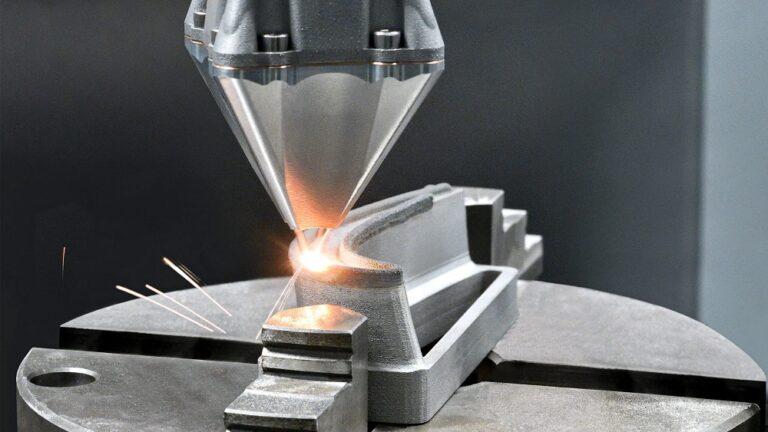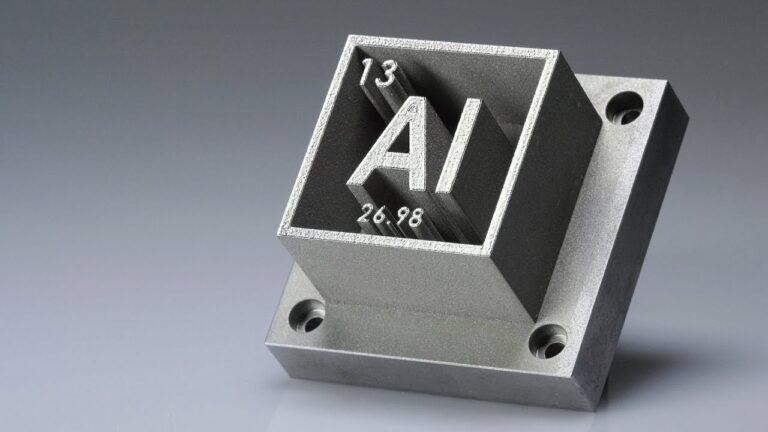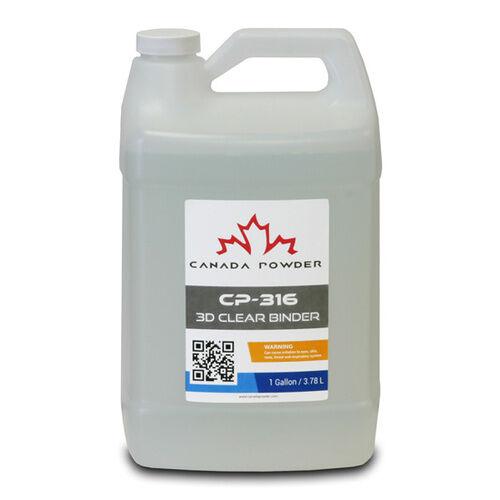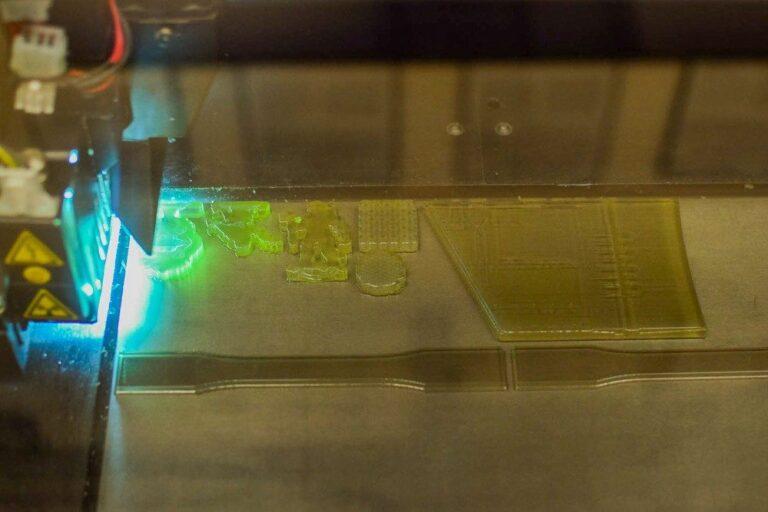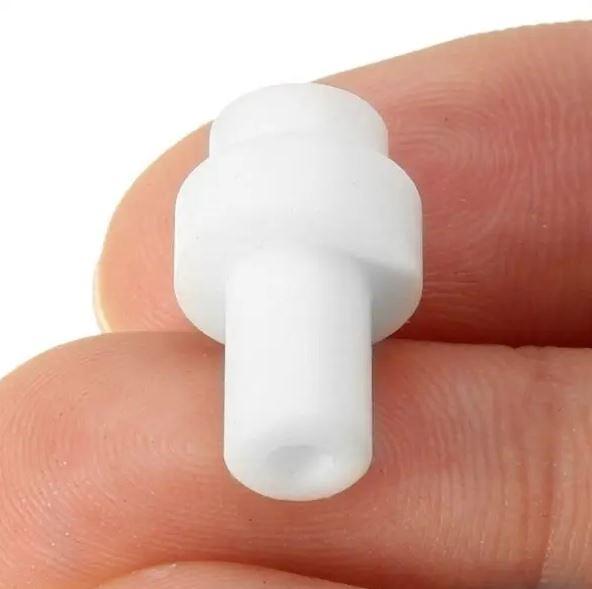What Is Additive Manufacturing (AM)?
last update : July 23, 2024
Introduction to Additive Manufacturing (AM)
What Is Additive Manufacturing? Additive Manufacturing (AM), commonly known as 3D printing, transforms digital designs into physical objects by layering materials. This revolutionary technology generates excitement across various fields, including medicine, aerospace, consumer goods, and automotive manufacturing. Unlike traditional subtractive manufacturing, which removes material from a solid block, AM builds objects layer by layer. This approach allows for the creation of complex designs while minimizing waste.
AM’s benefits are manifold: it improves efficiency, reduces costs, and enables the fabrication of intricate structures. However, despite its growing popularity, some misconceptions persist, such as the belief that AM is prohibitively expensive or requires specialized expertise. Technological advancements are progressively making AM more accessible, integrating it into mainstream manufacturing.
One of the most impactful aspects of AM is 3D printing, which revolutionizes the production of unique and customized products. This technology offers powerful alternatives for creating bespoke items, moving beyond the limitations of mass-produced goods. Understanding AM’s processes, materials, and applications is crucial as this technology continues to evolve and reshape various industries.
Rapid Prototyping
Rapid prototyping encompasses techniques to quickly produce scaled models of physical parts or assemblies for testing using 3D CAD data. Additive layer manufacturing, or 3D printing, is a standard method for creating prototypes and assembly components. Originating in the mid-1980s, rapid prototyping initially served model and prototype creation. Today, it is widely used across industries for economically producing small quantities of production-quality components, free from traditional manufacturing constraints.
How Does Additive Manufacturing Work?
Additive manufacturing creates 3D objects by layering material pieces. Digital designs are sliced into ultra-thin layers with STL files using CAD software. A nozzle or print head then distributes the material layer by layer. Alternatively, a laser or electron beam selectively melts a bed of powdered material, with cooling or curing fusing the layers.
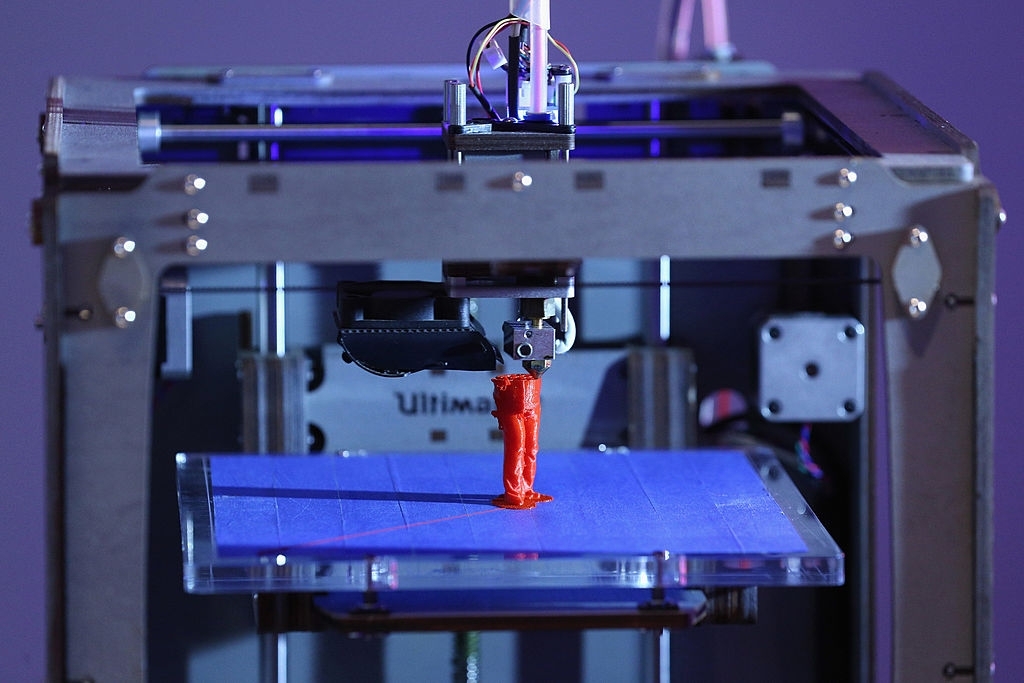
What is Additive Manufacturing (AM)?
Additive manufacturing (AM) is 3D printing for industrial production, creating objects by depositing materials layer by layer. AM adds material layer by layer, unlike subtractive manufacturing which removes material. AM builds geometries by adding feedstock like filament, wire, or powder, instead of removing material.
A Brief History of AM
Additive manufacturing (AM) has evolved significantly over the decades, becoming revolutionary. Here is a brief overview of its key milestones:
The 1950s-1980s: The Birth of Additive Manufacturing
- 1950s: The concept of layer-by-layer manufacturing was first explored with numerical control (NC) systems.
- 1970s: Researchers experimented with additive processes like stereolithography, curing liquid photopolymers layer by layer using UV light.
1980s-1990s: Advancements and Commercialization
- 1984: Charles Hull invented stereolithography, leading to the commercialization of 3D printing.
- 1990s: Selective Laser Sintering (SLS) and Fused Deposition Modeling (FDM) expanded AM possibilities.
2000s-2010s: Widening Applications and Accessibility
- 21st century: Rapid growth in AM adoption across industries like aerospace, automotive, healthcare, and consumer products. New materials and technologies improved production accuracy, speed, and versatility.
Present and Future: Advancements and Integration
- Ongoing: Advancements in materials, processes, and equipment, particularly in metal 3D printing. Integration with robotics and AI expands AM capabilities.
- Today: AM is poised to revolutionize traditional manufacturing, unlocking new design possibilities and reshaping the future of manufacturing.
This condensed history highlights the transformative journey of additive manufacturing from its early days to its current state.
Additive Manufacturing vs. Subtractive Manufacturing
Additive Manufacturing (AM) and Subtractive Manufacturing are distinct approaches to creating products, each with unique methodologies and applications. Here’s a concise comparison:
Additive Manufacturing
- Process: Builds objects layer by layer using 3D printing. It starts with a digital design in CAD software and employs methods like material deposition or powder fusion.
- Post-Processing: This may require polishing and finishing.
Subtractive Manufacturing
- Process: This involves machining and removing material from a workpiece using techniques like cutting, drilling, milling, and grinding. It utilizes CNC machines guided by CAD-generated tool paths.
- Material Removal: Creates shapes, holes, and channels by removing material.
Distinguishing Factors
- Methodology: AM adds material layer by layer, while Subtractive Manufacturing removes material from a solid block.
- Design Flexibility: AM allows for greater design freedom and complex geometries.
- Material Waste: AM generates less waste, adding material only where needed; Subtractive Manufacturing can result in significant waste.
- Prototyping vs. Production: AM is ideal for rapid prototyping and small-scale production; Subtractive Manufacturing suits larger-scale production.
- Time and Cost: AM can be time-consuming for complex parts, while Subtractive Manufacturing may be faster for simpler designs. Costs vary based on material, machine capabilities, and production volume.
Understanding these differences helps manufacturers choose the appropriate method based on design complexity, production volume, and cost considerations. Both approaches play crucial roles in modern manufacturing.
Pros and Cons of Additive Manufacturing (AM)
Pros and Cons of Additive Manufacturing (AM)
Additive Manufacturing (AM) has distinct advantages and disadvantages to consider:
Pros:
- Design Flexibility: Enables intricate, customized designs impossible with traditional methods.
- Reduced Material Waste: Adds material only where needed, minimizing waste.
- Rapid Prototyping: Allows for quick, cost-effective prototypes and iterative design improvements.
- Assembly Consolidation: Combines multiple parts into a single piece, reducing assembly needs.
- Lightweighting: Creates complex structures that reduce weight while maintaining strength.
- On-Demand Manufacturing: Produces parts as needed, reducing inventory costs.
- Customization: Facilitates the creation of personalized products for specific needs.
Cons:
- Production Speed: Slower than traditional methods, especially for large or complex parts.
- Limited Material Selection: Fewer material options than traditional manufacturing.
- High Equipment Costs: Significant initial investment in 3D printers and software.
- Post-Processing: Requires additional steps like finishing and polishing.
- Quality Control: Ensuring consistent quality and meeting standards can be challenging.
- Scalability Issues: Less suitable for high-volume production due to speed and cost constraints.
- Complexity: Requires digital design and machine operation expertise.
Understanding these factors helps businesses determine if AM suits their needs, balancing benefits with limitations based on production, cost, and design requirements.
Comparison of Additive Manufacturing (AM) and Subtractive Manufacturing
| Aspect | Additive Manufacturing (AM) | Subtractive Manufacturing |
|---|---|---|
| Methodology | Builds objects layer by layer. | Removes material from a solid block. |
| Design Flexibility | Allows for intricate, customized designs. | Limited by the tool’s ability to reach all areas of the material. |
| Material Waste | Minimizes waste by adding material only where needed. | Generates significant waste due to the material removal process. |
| Production Speed | Slower, especially for large or complex parts. | Faster for simpler designs and high-volume production. |
| Material Selection | Limited variety and properties of materials. | Wide range of materials available. |
| Equipment Costs | High initial investment in 3D printers and software. | Costs vary, often less expensive for simpler equipment. |
| Post-Processing | Often requires additional steps like finishing and polishing. | May also require finishing, but typically less extensive. |
| Prototyping and Iteration | Enables rapid prototyping and quick design iterations. | Less flexible for rapid changes and iterations. |
| Customization | Facilitates the creation of personalized products. | Customization is more difficult and expensive. |
| Quality Control | Ensuring consistent quality can be challenging. | Easier to maintain consistent quality and meet industry standards. |
| Scalability | Less suitable for high-volume production. | More scalable for mass production. |
| Complexity | Requires expertise in digital design and machine operation. | Requires traditional machining skills, often less complex than AM. |
This table highlights the key pros and cons of both manufacturing methods, helping in the evaluation of their suitability for different applications.
Additive Manufacturing Processes
Additive Manufacturing (AM) encompasses various processes that enable the creation of three-dimensional objects. Here are the seven primary additive manufacturing processes, each explained briefly:
1. Binder Jetting:
In Binder Jetting, the process selectively deposits a liquid binder onto a powdered material bed, layer by layer, to bind the particles together and form the desired shape.
2. Material Extrusion:
Material Extrusion, also known as Fused Filament Fabrication (FFF), involves the extrusion of a thermoplastic filament through a heated nozzle, which deposits the material layer by layer to build the object.
3. Powder Bed Fusion:
Powder Bed Fusion utilizes a laser or electron beam to selectively melt or sinter powdered materials, such as metal or polymer, layer by layer, to create fully dense parts.
4. Vat Polymerization:
In Vat Polymerization, a light source, such as a UV laser, selectively cures a liquid photopolymer resin layer by layer, solidifying the desired part.
5. Material Jetting:
In Material Jetting, multiple print heads deposit droplets of liquid photopolymer or wax material layer by layer, and then cure them to form the final object.
6. Directed Energy Deposition (DED):
DED utilizes focused thermal energy, such as a laser or electron beam, to melt and fuse metal or ceramic powders or wires, layer by layer, to build the part.
7. Sheet Lamination:
Sheet Lamination uses adhesive or heat to bond layers of sheet material together to form the object. The sheets may be paper, plastic, or metal.
Understanding the distinct characteristics of each additive manufacturing process allows for informed decision-making when selecting the most suitable approach for a specific manufacturing requirement.
Materials for Additive Manufacturing
Additive Manufacturing (AM) utilizes a wide range of materials to create three-dimensional objects. Here, we present a general overview of the materials that people commonly use in AM.
- Polymers/Thermoplastics: AM processes, such as Material Extrusion, commonly employ polymers like PLA and ABS, offering versatility and ease of use.
- Photopolymers: Vat Polymerization methods utilize liquid photopolymer resins that cure under light exposure, providing high detail and smooth surface finishes.
- Metals: Powder Bed Fusion and Directed Energy Deposition processes frequently utilize metal powders, such as aluminum, titanium, stainless steel, and cobalt-chrome alloys.
- Ceramics: In AM processes like Binder Jetting and Vat Polymerization, ceramics such as alumina, zirconia, and silicon carbide find use in applications that require high-temperature resistance or electrical insulation.
- Composites: Fiber-reinforced composites, combining materials like carbon fiber or glass fiber with polymers or resins, offer increased strength and stiffness in AM applications.
- Wax: Material Jetting and Binder Jetting processes can utilize wax-based materials for applications like investment casting or creating sacrificial patterns.
- Biochemicals/Biomaterials: In the medical field, practitioners have utilized additive manufacturing (AM) to create tissue-engineered constructs or customized medical devices using biocompatible materials such as bioresorbable polymers, hydrogels, or even living cells.
It’s important to note that the availability of materials may vary depending on the specific AM process and machine used. The continuous development of new materials expands the possibilities for AM and enables a wider range of applications in various industries.
The 3D printing process
1. Modeling
- Software: Create a product model using CAD software.
- File Formats: Save the model in STL or AMF format.
- Verification: Check for and correct errors in the model file, such as holes or weak points, to prevent defects in the final product.
2. Printing
- File Transfer: Send the verified STL or AMF file to the 3D printer.
- Layering: The printer deposits layers of material (usually thermoplastic) to build the object from the bottom up, following the instructions from the file.
3. Finishing
- Surface Quality: Apply solvents or other techniques to smooth and finish the surface.
- Support Removal: Remove any support structures used during printing.
This process includes modeling the object, printing it layer by layer, and finishing the final product to ensure quality and usability.
Examples of Additive Manufacturing
Additive manufacturing (AM), or 3D printing, has transformative applications in various industries:
- Automotive: AM enables the creation of lightweight and complex components, reducing vehicle weight and improving fuel efficiency. People use it to prototype, produce custom parts, and even create end-use components.
- Aerospace: The aerospace industry leverages AM to produce intricate and high-strength, lightweight yet durable parts. It allows for the efficient production of components such as engine parts, brackets, and airframe structures, enhancing performance and reducing material waste.
- Medical: In the medical field, AM is revolutionizing the production of custom implants, prosthetics, and surgical instruments. It allows the creation of patient-specific devices tailored to individual anatomical requirements, improving surgical outcomes and patient comfort.
This concise overview highlights AM’s significant impact across various sectors, demonstrating its versatility and potential to innovate traditional manufacturing processes.
In the pictures below, you can see some examples of additive manufacturing.
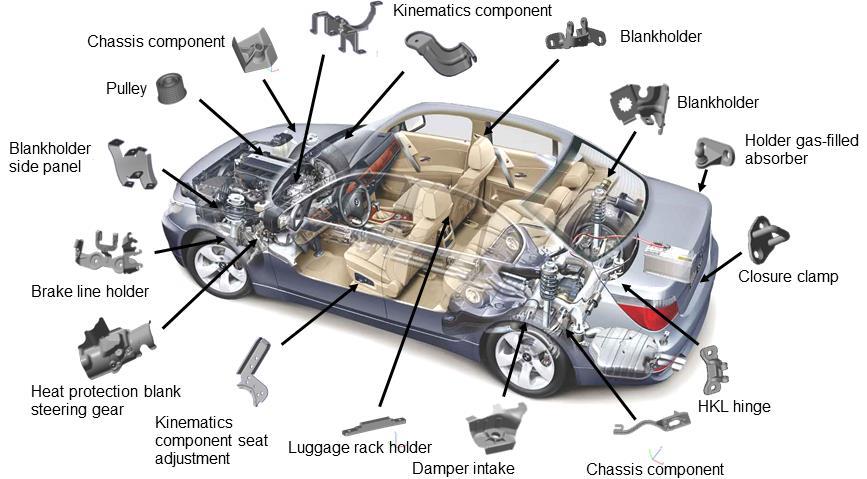
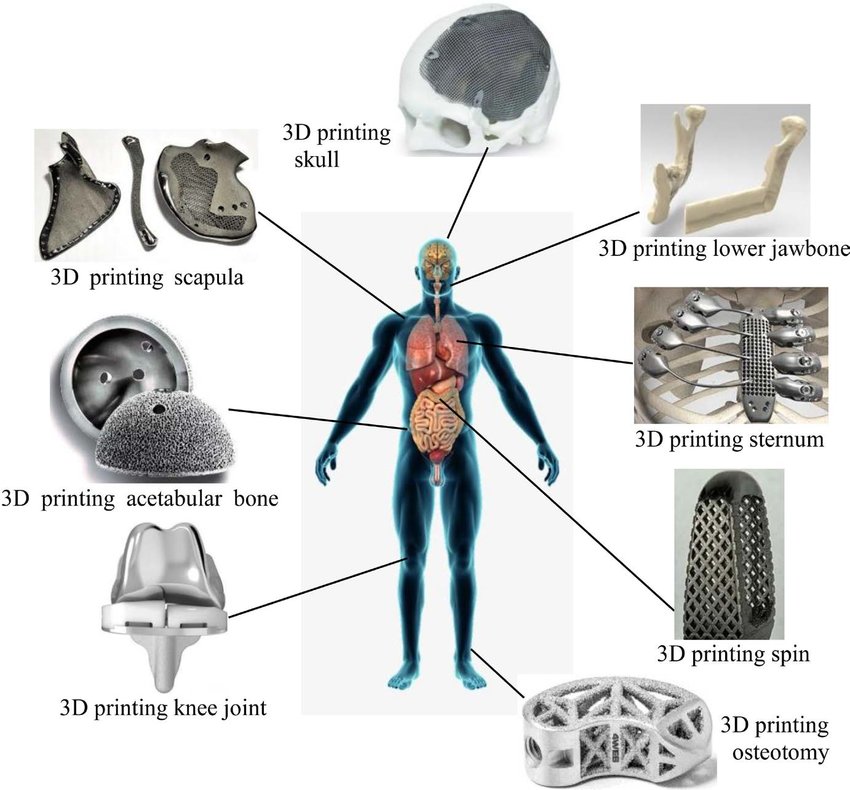
Conclusion
In conclusion, additive manufacturing (3D printing) is a transformative technology that builds three-dimensional objects layer by layer. It provides benefits like design flexibility, reduced waste, rapid prototyping, and creating complex, customized shapes. Its applications span aerospace, automotive, healthcare, and consumer goods.
Despite its advantages, additive manufacturing faces challenges like production speed, material choices, and post-processing needs. Initial equipment costs and expertise in digital design are also considerations.
However, with ongoing advancements in materials and technologies, additive manufacturing is set to revolutionize traditional methods, offering enhanced design, efficiency, and customization. Staying informed about its processes and impacts will help businesses leverage its potential for innovation and optimization.
FAQs
Additive manufacturing, or 3D printing, creates three-dimensional objects by layering materials.
It offers design flexibility, reduced material waste, and rapid prototyping.
Industries like aerospace, automotive, healthcare, and consumer goods use it.
Challenges include production speed, material options, and post-processing.
It builds objects layer by layer, allowing for complex designs and reducing waste.
It can be cost-effective for low-volume and customized production, though costs vary.

